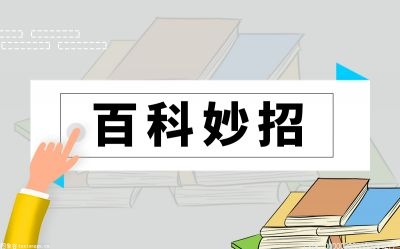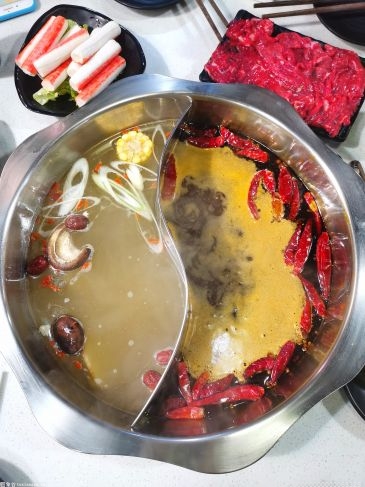2023年3月14日-3月20日,上海宏潤博源學(xué)校迎來了中國語言文化節(jié)。此次文化周共有四大篇章:河燈之約、漢字書懷、漢服翩翩和游園喜樂。
From March 14 to 20, 2023, SHBS held itsChinese Language and Culture Festival. This week-long festival included 4 sessions: "FloatingLanterns on the River", "Chinese Calligraphy Appreciation", "WearingHan Costumes" and "Touring a Garden Party."
Part 01
 (資料圖片)
(資料圖片)
放河燈
Floating Lanterns on the River
放河燈又稱放荷燈,是華夏民族的傳統(tǒng)習(xí)俗,將紙做的燈罩底部放上蠟燭或燈芯,放入江河湖海中任其漂泛,用以寄托美好的心愿和祝福。
FloatingLanterns on the Riverisone ofthe traditional customsof the Chinese nation.People put candles or wicks on the bottom of the paper lampshade andthenput the handmade lanterns onrivers, lakes and seas to convey good wishes and blessings.
3月14日,文化周由“河燈之約”拉開帷幕。晚自習(xí)下課后,在老師們帶領(lǐng)下,同學(xué)們來到大淀湖邊,放下那只寄托著濃烈情感、屬于自己獨一無二的河燈。三三兩兩的河燈從岸邊慢慢往遠(yuǎn)處飄蕩,湖面燈光搖曳,非常動人。
On March 14, the Cultural Week began with "FloatinLanterns on the River". After students finished their night study hall, they, led by their teachers, came to the side of the Dadian Lake, put down their own unique lanterns in which they had reposed strong emotions. River lanterns floated slowly in twos and threes away from the shore, and students and teachers were impressed by the flickering candle light on the surface of the river.
(注:宏潤博源一直都非常重視環(huán)保,負(fù)責(zé)老師已經(jīng)提前聯(lián)系河燈到達(dá)彼岸之后的環(huán)保善后。SHBS always promotes environment-friendly practices. Teachers in charge have arranged in advance the recollection of those lanterns when they floated away.)
Part 02
漢字書懷
Chinese Calligraphy Appreciation????????????
3月15日,“漢字書懷”活動在教學(xué)樓前舉行。仙氣的文字紗將寫字臺圍住,營造出詩情畫意的氛圍。同學(xué)們在空閑時間來到寫字臺中,用“寫字”來傳達(dá)內(nèi)心深處的情感與理想。
March 15 saw the "Chinese Calligraphy Apprecitaion"activity held outside the teaching building. Several desks were surrounded by fairy calligraphy gauze, which created a poetic atmosphere. Students came and sat at the desks in their spare time, and conveyed their innermost feelings and dreams throughChinese calligraphy.
Part 03
漢服翩翩,游園喜樂
"Han Costume & Garden Party"???????????????
3月20日,“漢服翩翩”和“游園喜樂”活動同時進(jìn)行。老師和同學(xué)們穿上中華民族各個朝代的傳統(tǒng)民族服飾(漢服),兌換好了古代貨幣(銅板),一同體驗真實模擬出的古代集市。在游園會中,同學(xué)們通過“吃”、“喝”、“玩”、“樂”四個方面全方位感受源遠(yuǎn)流長的中華文化。
On March 20, two activities, i.e. "Wearing Han Costume"and "Touring Garden Party", were held at the same time. Teachers and students put on the traditional costumes of various dynasties of the Chinese nation, exchanged ancient currency (copper coins), and toured the vivid simulated ancient fair together.
滑動查看更多
集市的入口搭建好了紅色的舞臺,大家聚集在舞臺前,觀看具有濃厚民族色彩的表演。
A stage was set up at the entrance of the fair. People gathered in front of the stage to watch performances with richethnic features.
首先,楊同學(xué)、唐同學(xué)和江同學(xué)帶來樂器合奏《瀏陽河》。作為中國經(jīng)典民歌,這首歌自創(chuàng)作以來,廣為流傳,多位藝術(shù)家以不同的方式及風(fēng)格演繹過。三位同學(xué)用箜篌、竹笛和葫蘆絲三種中國民族樂器,為大家?guī)愍毦咭桓竦难葑唷?/p>
First, Felicity, Diana and Alisa brought theirown musical instruments and played a tune namedLiuyang Rivertogether. As a classic Chinese folk song, this song has been widely spread andperformed by various artists in different ways and stylessince it was created. 3 playersperformed Konghou, bamboo flute and hulusi, three Chinese national instruments,respectively, making the song so unique.
接著,魏同學(xué)為我們帶來了舞蹈《紅鱗》,這支舞借鑒了古典芭蕾的結(jié)構(gòu)形式,表現(xiàn)出中國神話故事的神韻。她婀娜多姿令人如癡如醉。
Then, Alicebrought us the dance "Red Scale", which drew on the form of classical ballet and showed the charm of Chinese fairy tales. The dancer was so charming and graceful.
最后,王老師和他的搭檔為大家?guī)砹司实狞S梅戲表演。黃梅戲,原名黃梅調(diào)、采茶戲等,起源于湖北黃梅,發(fā)展壯大于安徽安慶,與京劇、越劇、評劇 、豫劇并稱“中國五大戲曲劇種”。兩位老師專業(yè)的唱腔讓現(xiàn)場連連爆發(fā)出熱烈的掌聲。
Finally, Mr. Wang Wanyou and his partner performed a scene ofHuangmei Opera. Huangmei Opera, formerly known as Huangmei Tune, tea Picking Opera, etc., originated from Huangmei in Hubei Province and developed and grewin Anqing, Anhui Province. Together with Peking Opera, Yue Opera, Pingju Opera and Henan Opera, Huangmei Opera is considered one of"China"s five major operas". Two performers’professional singingskills made the audience burst into warm applause.
看完表演,同學(xué)們來到集市口,準(zhǔn)備開始游園啦!
After watching the performance, students gathered at the entrance of the fair, ready to enjoy touring the garden party!
游園開始前,千萬不能忘記領(lǐng)取“原創(chuàng)集郵卡”!這是老師和同學(xué)們?yōu)榇舜位顒釉O(shè)計和制作的游園攻略卡片,四枚由朱同學(xué)和陳同學(xué)設(shè)計的原創(chuàng)貼紙對應(yīng)活動的四大篇章,12枚印章則對應(yīng)集中的12個攤位,快跟隨小編一起帶上集郵卡,打卡每個攤位啦!
Before the tour started, don"t forget to get the "original stamp collecting cards"which were designed and made by teachers and students to serve as the tour guide.Four original stickers designed by Luca and Amy correspondedto the four sessionsof the activity, and 12 stamps correspondedto the 12 stalls in the fair. Follow the editor, take the cards with you and collect a stamp from each stall. Hurry up!
餃子攤
Dumpling stall
餃子,是中國傳統(tǒng)食物,以面皮包餡、形如半月或元寶形,包好的餃子可以拿來制作成蒸餃、煎餃或湯餃。王老師和陳老師的“王姐水餃”,味道鮮美,同學(xué)們紛紛前來品嘗。
Shaped like a half moon or a gold ingot, Jiaozi, a traditional Chinese food,is a dumpling wrapped with dough and filled with stuffings.The ready-made dumplings can be steamed, fried or boiled with soup. Ms. Wang Ling and Mr. Chen Bin worked together to make and boil delicious dumplings and attracted crowds of students and teachers to queue up in front of their stall.
冰糖葫蘆
A stall selling sugar-coated haws
冰糖葫蘆是中國傳統(tǒng)小吃,起源于南宋,一般用山楂串成,涂上糖稀,再等糖稀凍硬,吃起來又酸又甜。手工制作的冰糖葫蘆還原了這份傳統(tǒng)小吃的靈魂,很快就被一搶而空。
Originated in the Southern Song Dynasty, Sugar-coated haws, or Tanghulu,area traditional Chinese snackgenerally made of hawstring, coated with sugar, and then frozen hard. It tastes sweet and sour. Handmade sugar-coated hawsrevived the essence of the traditional snack and thus they were quickly sold out.
茶&糕點
A stall selling Tea & Cakes
在這里,同學(xué)們能夠親眼觀賞中式茶道、品味一杯清茶,并品嘗傳統(tǒng)的中式糕點(桃酥、青團(tuán)、椰絲球、綠豆糕)。
Here, students couldwatch the Chinese tea ceremony, taste a cup of tea, and take a bite oftraditional Chinese cakes (peach cake, green ball, coconut ball, Mung bean cake).
春卷
A Stall selling Spring Rolls
春卷,又稱春餅、春盤、薄餅。是中國民間節(jié)日的傳統(tǒng)食品,流行于中國各地,在江南等地尤盛。現(xiàn)炸春卷保留了春卷的酥脆,令人垂涎欲滴。
Spring rolls, also known as spring pancakes, spring plates, orpancake,are a traditional Chinese folk foodserved during festivals, and is popular all over China, especially in regions south of the Yangtze River and other places. Being a mouth-watering snack, fried spring rolls taste crisp and delicious.
酒釀圓子
A stall selling fermented glutinous rice balls
酒釀在北方被稱為“米酒”或“甜酒”。它的釀制工藝簡單,口味香甜醇美,深受人們喜愛。同學(xué)們在攤前品嘗著酒釀圓子,感受絲絲甘甜在味蕾中舞蹈。
Fermented glutinous rice is called "rice wine" or "sweet wine" in the northern China. Its brewing process is simple. Tasting sweet and mellow, it is widely popular with people. Students ate rice balls in front of the stall and enjoyed its sweetness very much.
投壺
A stall where arrows were thrown into a bamboo tube
投壺是中國古代士大夫宴飲時做的一種投擲游戲,也是一種禮儀。在戰(zhàn)國時期較為盛行,尤其是在唐朝,得到了發(fā)揚(yáng)光大。將箭向壺里投,以投中多者為勝。看起來規(guī)則簡單,但投中十分困難,同學(xué)們躍躍欲試,感受古代游戲的快樂。
It is a kind of throwing gameplayed by ancient Chinese officials" while they were attending banquets. It wasalso an etiquettepopular in the Warring States period, further developedin the Tang Dynasty, and was carried forward. The one who throws the most arrows into the tube wins the game. The rules seem simple, but it’s very difficult to throw the arrows exactly into the tube.Students couldn’t wait to try playing the game and have fun.
毽子
A stall where the game of shuttlecock kicking is played
毽子,又稱毽球,古稱拋足戲具,用雞毛插在圓形的底座上制成的游戲器具。作為一種古老的傳統(tǒng)民俗體育活動之一,距今已有兩千多年的歷史了。作為簡便易行的健身活動,更是深受青少年兒童的喜愛。同學(xué)們在攤前進(jìn)行“踢毽子”比賽,仿佛回到了愉快童年時光。
Shuttlecock, also known as shuttlecock ball, is a game devicemade by fixingchicken feathers ontoa round base. As one of the ancient traditional folk sports events, itcould date back to more than 2,000 years ago.As a simple and easykind of workout, it is widely popular withteenagers and kids. Studentshad a shuttlecock kicking competition, and they enjoyed themselves so much as if they were brought back to their happy childhood.
陀螺
A stall where the game of spinning top was played
陀螺是中國民間最早的娛樂工具之一。陀螺的上半部分為圓形,下方尖銳,從前多用木頭制成,現(xiàn)代多為塑料或鐵制。玩時用繩子纏繞,用力抽繩,使其直立旋轉(zhuǎn),之后通過鞭子不斷抽打,讓其保持旋轉(zhuǎn)。同學(xué)們兩人一組進(jìn)行比賽游戲,圍觀者還可進(jìn)行“下注”,賭贏便可獲取輸者的銅板。現(xiàn)場氣氛高漲,非常熱鬧。
Spinning top is one of the earliest folk entertainment tools in China. The top half of the top is round, and the bottom issharp. it used to be made of wood,but now it is made mostly of plastic or iron.While playing, one winds thewhiparound the top and suddenly unwind the whipso that the toprotates upright, and then by striking it repeatedly with a whip, one keepsit spinning. Students competed in pairs, and audiencecould"bet" on the winners and get coins from the losers.It was an exciting and fun game.
文試
A stall where a quiz show was going on
在攤前,同學(xué)們將從竹筒里抽取“飛花令”和“猜燈謎”題目,進(jìn)行解答。這不僅需要熟知漢字的結(jié)構(gòu),更需要大量的古詩詞儲備。
In front of the stall, studentsdrewquestions such as "Fei Hua Ling" and "guessing lantern riddles" from bamboo tubes and then tried to answer the questions. This quiz requirednot onlymuch knowledge of the structure of Chinese characters, but also a large reserve of ancient poetry.
皮影
A stall where Shadow plays were made
皮影,又稱“影子戲”或“燈影戲”,是一種以獸皮或紙板做成的人物剪影以表演故事的民間戲劇。在皮影攤位,同學(xué)們能夠體驗刻畫和裁剪皮影戲故事中的人物,親手雕刻出屬于自己的人物造型。
Shadow puppets, also known as "shadow play" or "lantern play", is a kind of folk drama in which characters are silhouetted in animal skins or cardboard so as to tell stories. At the stall, students couldtrypainting and carvingof characters in shadow play stories and carveouttheir own characterswith their own hands.
制衣
A stall where various Han Costumeswere made
制衣攤位提供了各種漢服的原版模型(2D),并提供布料和雙面膠,讓同學(xué)們有機(jī)會自己動手制作獨特的漢服模型。希望同學(xué)們在制作的過程中與文化符號獲得真實的交互,對漢服的制式更加了解。
This stall provided various original models of Han Costumes (2D), as well as fabric and double-sided tape, giving students the opportunity to make their own unique costume models. We hope that students will have real interaction with cultural symbolswhile making their costumesand have a better understanding of how the costumes look like.
除了12個固定攤位,游園會還別具創(chuàng)意地安排了“繡球招親”系列活動,用真實的表演將大家?guī)牍糯恼杏H場景。遠(yuǎn)方拋來的繡球被同學(xué)們牢牢接在手中,就如同穿越了千年,接過中華文化的接力棒。
In addition to the 12 fixed stalls,a series of activities called "Hydrangea Wedding"was organized at the garden party, bringingeveryone into the ancient wedding scenewith life-like performances. The hydrangea thrown from afar was firmly caught in the hands of the students, as if it had gone through thousands of years, and passed on to those who would keep on with the relayof Chinese culture.
希望每位同學(xué)都能在中國語言文化周中留下難忘的記憶。雖然都將要去國外念大學(xué),但是中國文化的力量,將永遠(yuǎn)照亮大家前行的道路。
I hopeChinese Language and Culture Weekwill leave everyone with unforgettable memory.Althoughall of us will study abroad, we believe the power of Chinese culture will always lightup our path ahead.
文 | Kevin Gu
審核 | Xu Wu
翻譯 | Dawn Xu
排版 | Jang
關(guān)鍵詞:




















 營業(yè)執(zhí)照公示信息
營業(yè)執(zhí)照公示信息